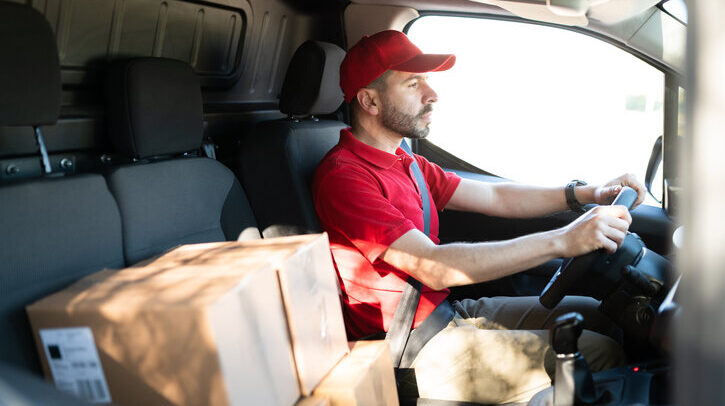While legal battles swirl around rideshare and app-based delivery platforms, a more immediate and underreported crisis is emerging across North America’s regional courier sector. The US Department of Labor (DOL)’s pause on enforcing its 2024 independent contractor rule has only deepened uncertainty for last-mile operators already navigating a patchwork of state regulations. In states like California, Massachusetts and New Jersey, stricter ‘ABC tests’ remain in force, creating a fragmented legal landscape that disproportionately impacts small and mid-sized courier companies.
Unlike the multinational carriers and tech-enabled delivery giants, regional carriers – family-run businesses and small fleets – often serve hyperlocal or cross-state delivery needs with limited staff and financial flexibility. These operators are the connective tissue of the parcel ecosystem, delivering critical packages to consumers, pharmacies and retailers with a speed and local knowledge that national firms can’t always match.
Yet every legal shift demands a fresh evaluation of operational compliance. A misstep could result in lawsuits, fines or reclassification of contractors as employees – an outcome that could effectively shutter businesses built on flexible labor models.
The costs of compliance, or non-compliance, are not just financial; for many courier businesses, it’s about survival.
The compliance balancing act
Understanding the nuances of the ABC test is critical for courier companies. The test presumes worker classification as an employee unless the business can prove:
A. The worker is free from control and direction in performing the service
B. The work is outside the usual course of the business
C. The worker is engaged in an independently established trade or occupation
For courier companies, the second prong is often the most difficult. Delivering packages is the core business function – which places most 1099 drivers (those classed as self-employed) squarely within the bounds of employee classification under state law. This creates a legal paradox for operators who rely on contractor flexibility but face a regulatory framework that implicitly penalizes their business model. It’s why compliance can’t be reactive – it must be proactive, strategic and customized to each jurisdiction.
Outdated tools, hidden costs
Compounding these challenges is the reliance on transportation management systems (TMS), developed decades ago for asset-heavy fleets with W2 drivers (those classed as employed) and fixed schedules. These legacy tools were built for a different era and not for the fluid nature of today’s last-mile logistics. They often lack the ability to track contractor onboarding workflows, automate legal documentation or generate alerts about missing credentials.
In an environment where regulatory requirements differ by state – and can change quickly – this lack of visibility creates significant legal and operational risk. Manual contract management, inconsistent onboarding and lack of real-time compliance tracking only increase the risk of misclassification and weaken a company’s ability to defend itself during audits or litigation. The result: growing exposure at a time when scrutiny is intensifying.
Why digital-first workflows are no longer optional
Over the past five years, the case for digital-first workflows has shifted from a competitive advantage to an operational imperative. Regulatory uncertainty is a key reason – but not the only one.
Today’s most resilient courier operations use cloud-based platforms that integrate compliance into daily tasks. These systems guide drivers through onboarding, collect digital signatures, confirm insurance coverage and even flag expiring documentation – all before a contractor hits the road.
They also enable audit-ready reporting, giving carriers peace of mind in the event of state-level inquiries. For example, automated contractor onboarding tools can ensure that every driver signs the correct agreement, uploads required documentation and completes necessary orientation – before they ever pick up a package. Real-time compliance prompts can flag expired insurance or missing tax forms, reducing the risk of misclassification claims.
But these tools also deliver efficiency benefits beyond compliance. They reduce administrative overhead, improve onboarding speed and ensure consistency across locations. At scale, that’s a tangible competitive edge.
Rethinking the tech stack: Not just for compliance reasons
While legal exposure is a strong motivator, many couriers are modernizing for more strategic reasons: operational necessity. Consumer expectations are higher than ever: packages must be delivered not just quickly, but with visibility, communication and minimal disruption.
Legacy systems often lack real-time tracking, dynamic routing or analytics dashboards. In contrast, modern platforms allow dispatchers to optimize routes; drivers to self-navigate and report issues in real time; and managers to monitor performance metrics. These upgrades reduce costs, increase transparency and improve customer satisfaction – critical factors in a competitive, margin-sensitive market.
Ultimately, the decision to upgrade is less about ticking compliance boxes and more about building a business that can adapt, grow and scale in any regulatory environment.
What carriers can do now
For regional courier companies navigating this complex landscape, there are a few tangible steps to take now:
- Conduct a full compliance audit on current processes: Examine contractor agreements, onboarding practices, tax records and insurance documentation. Are your records uniform? Do they reflect current state-level requirements? If not, now is the time to standardize processes.
- Adopt technology that evolves with regulation: Modern logistics platforms are increasingly modular, affordable and scalable. Invest in tools that automate documentation, flag non-compliance and support cross-state operations. Look for systems that can adjust quickly to changes in local laws.
- Stay connected to policy and industry trends: Legal frameworks are fluid. Subscribe to newsletters from labor law firms, join courier industry associations and consult experts in employment classification. Carriers that remain informed will be better positioned to pivot – and avoid costly missteps.
The road ahead
The DOL’s current pause in enforcement may feel like a reprieve, but it is not a long-term solution. As legal challenges unfold and political winds shift, carriers should anticipate further changes in classification standards – potentially swinging back toward stricter interpretations.
Meanwhile, states will continue forging their own paths. For regional and multistate operators, this means navigating a compliance patchwork that will persist regardless of federal action.
But amid the complexity lies an opportunity. Courier businesses that modernize now – operationally and technologically – will not only survive regulatory disruption but position themselves as leaders in a rapidly evolving landscape.
Adaptation is not just about staying compliant. It’s about building a business that’s nimble, responsive and built to thrive in whatever regulatory environment comes next.


